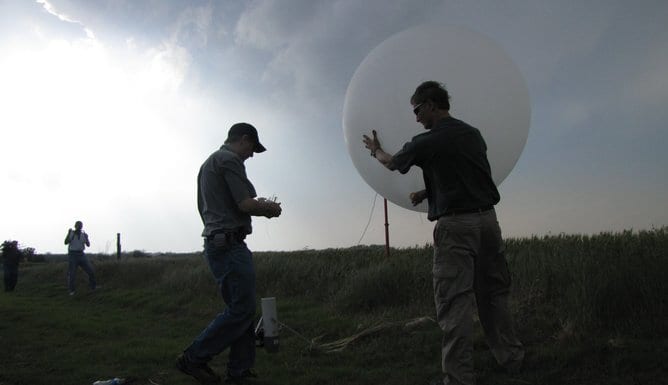
Before climate sceptics got excited about the “hiatus” or slowdown in global surface warming during the past 15 years or so, they were fond of discussing the “missing tropospheric hotspot” – the alleged lack of anticipated temperature increase in the tropical upper troposphere (roughly 5-15 km altitude).
Both the “hiatus” and the “missing hot spot” have been interesting research problems, because models seemed like they might be missing something important.
There have been significant advances on both problems in the past year. And the new results do not offer much hope that scientists are fundamentally mistaken about global warming.
The “hiatus” has been addressed by a veritable avalanche of recent studies, as reported in articles on The Conversation (such as here and here). These studies collectively show that the warming slowdown has been the temporary result of a regularly recurring change in ocean circulation – essentially, a bump in the road towards a warmer planet. The phenomenon has no evident link to global warming or the physical principles that connect it to greenhouse gases.
Hitting the spot
But what about the “missing hot spot”? In this case, part of the atmosphere has reportedly warmed little, in spite of predictions that it should warm significantly faster than the surface. This would seem highly relevant to the question of whether humans are causing climate change, although in fact, the warming maximum should happen equally whether warming is natural or human-induced. Still, the seeming lack of such warming is an important puzzle for atmospheric scientists.
I wrote here in 2011 that recent (at the time) satellite studies were coming closer to showing the expected warming, but were still not all the way there. Some analyses of the data seemed to show it but were not completely convincing. Now, three newer papers make it look very much like the tropical atmosphere has indeed been warming as expected all along.
First, a 2013 paper, featuring a new analysis of radiosonde (weather balloon) data showed increased warming in the upper troposphere. This analysis, which used weather forecasts to help identify artificial changes in the balloon data (such as those due to undocumented changes to instruments), also came up with a reassuringly realistic pattern of warming compared with earlier efforts.
My colleague Nidhi Nishant and I have now analysed the radiosonde data yet again, and we found a tropical warming profile even closer to that expected. The fastest warming was at an altitude of about 12 km, and averaged 0.25C per decade – much faster than at the surface (0.14C per decade).
This means that the troposphere is warming around 70-80% faster than the surface. So, far from being absent, this tropospheric warming is at least as strong as predicted by the average climate model, which predicted that the troposphere would heat 64% faster than the surface.
Moreover, our data show that the tropical troposphere has warmed at a more or less constant rate since widespread balloon launches began in 1958, which is a bit puzzling given the ocean-surface hiatus since 2000 or so.
More evidence
This result comes hot on the heels of a new University of Washington study which overcomes one of the key obstacles to obtaining an accurate satellite-based record of atmospheric warming. The problem is that temperatures vary during the day, and when a new satellite is launched (which happens every few years), it observes the Earth at an earlier time of day than the old one (since after launch, each satellite orbit begins to decay toward later times of day).
This means that over time, if you don’t know the daily cycle of temperature very accurately over the whole planet, you are going to get an errors in the long-term warming trend when you piece the different satellite records together. The University of Washington group has come up with a way of estimating this temperature cycle from the satellite data themselves while at the same time accounting for other effects such as calibration changes.
The result is that they now find mid-to-upper tropospheric warming that is just as strong as predicted by models, in line with both of the new radiosonde studies. The troposphere was warming all along – it’s just that the warming is very hard to see when other things are happening to the instruments over time.
One remaining puzzle is that the radiosonde data do not show a “hiatus” in atmospheric warming, but the satellite data do. Another is that the surface warming rate over oceans has been somewhat weaker than predicted by most climate models, even going back well before the “hiatus.”
This could be due to the models being too sensitive, but would be more easily explained by the existence of some influence on climate that has up until now been partly offsetting the greenhouse effect, and has not been properly accounted for. Thus climate scientists still have important puzzles to solve — but it looks like the “missing hot spot” has finally been found.
![]()
Steve Sherwood is Director, Climate Change Research Centre at UNSW Australia.
Source: The Conversation. Reproduced with permission.







